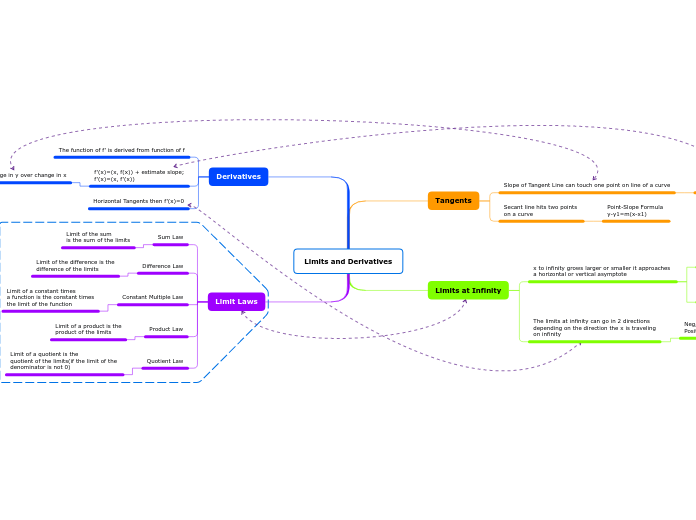Limits and Derivatives
Tangents
Slope of Tangent Line can touch one point on line of a curve
2 points to estimate a slope
Secant line hits two points
on a curve
Point-Slope Formula
y-y1=m(x-x1)
Limits at Infinity
x to infinity grows larger or smaller it approaches
a horizontal or vertical asymptote
As x approaches a number and f(x) is
equal to infinity than the function
has a vertical asymptote
As x approaches infinity and f(x)
equals a number than the function has a
horizontal asymptote
The limits at infinity can go in 2 directions
depending on the direction the x is traveling
on infinity
Negative means x is coming from the left
Positive means x is coming from the right
Derivatives
The function of f' is derived from function of f
f'(x)=(x, f(x)) + estimate slope;
f'(x)=(x, f'(x))
Slope change in y over change in x
Horizontal Tangents then f'(x)=0
Limit Laws
Sum Law
Limit of the sum
is the sum of the limits
Difference Law
Limit of the difference is the
difference of the limits
Constant Multiple Law
Limit of a constant times
a function is the constant times
the limit of the function
Product Law
Limit of a product is the
product of the limits
Quotient Law
Limit of a quotient is the
quotient of the limits(if the limit of the
denominator is not 0)
